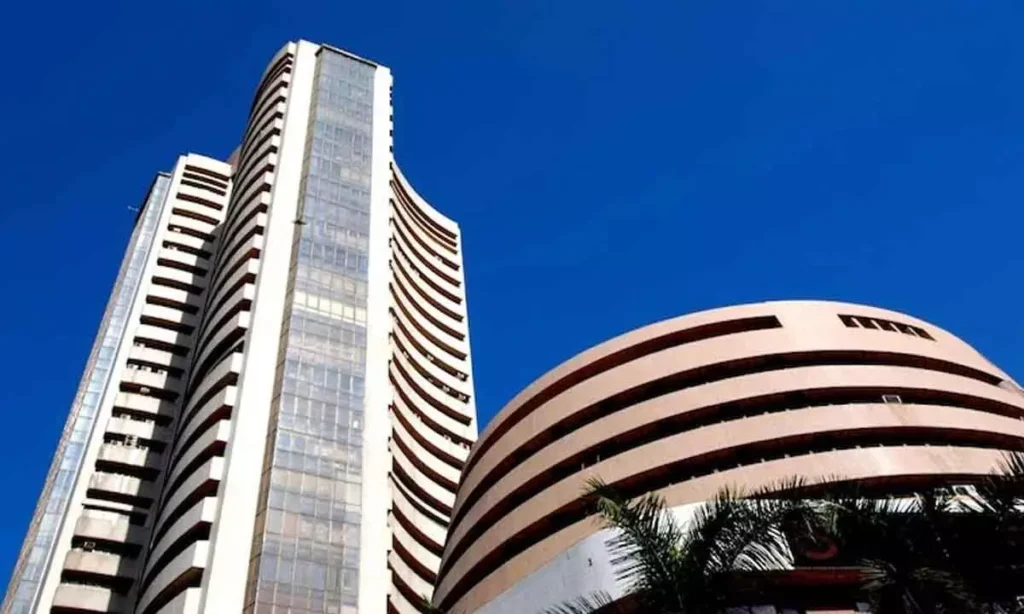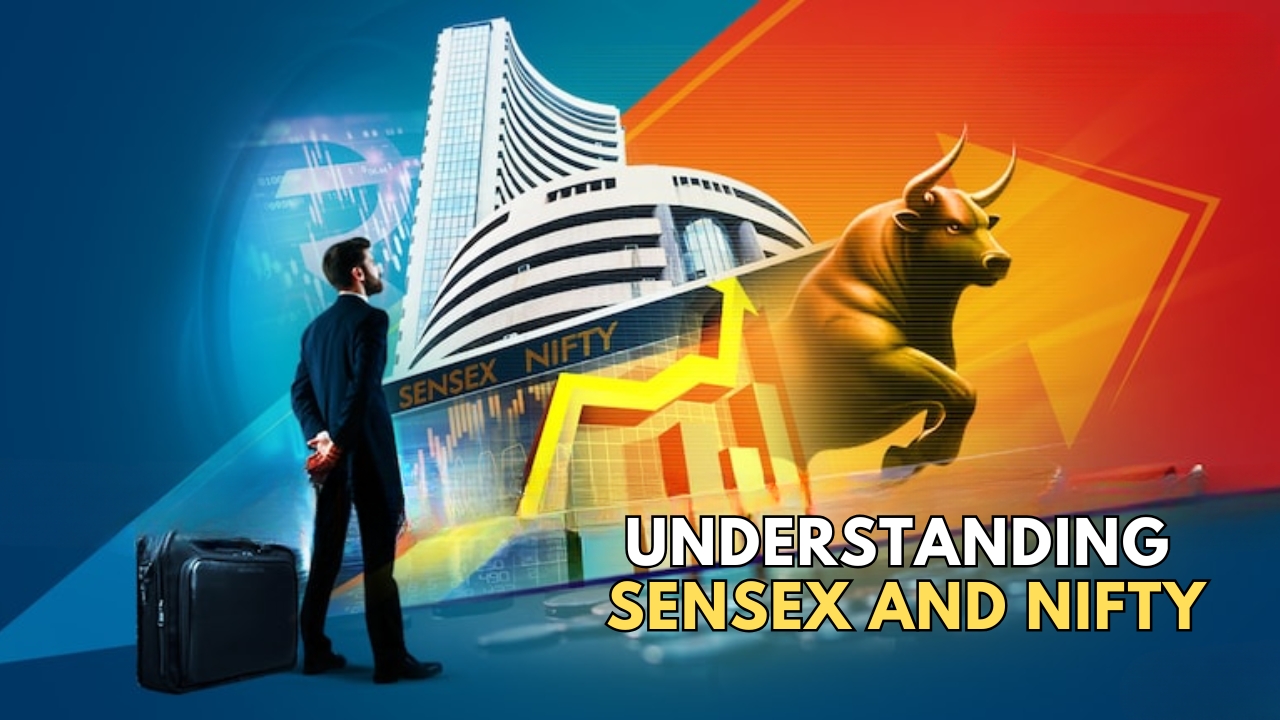The Indian share market can feel like a maze for beginners, but there are two key terms you will come across almost every day—Sensex and Nifty. These terms are not just buzzwords; they represent the pulse of the Indian stock market. Whether you are an experienced investor or a complete novice, understanding Sensex and Nifty can help you navigate the complex world of stocks with more confidence.
In this article, we’ll explore what Sensex and Nifty really are, how they work, and why they are considered the backbone of the Indian share market. We’ll break down the concepts in simple language, providing you with a clear and comprehensive understanding.
What is Sensex?

Sensex, short for the Sensitive Index, is a stock market index that represents the performance of the 30 largest and most financially sound companies listed on the Bombay Stock Exchange (BSE). Think of Sensex as a thermometer for the Indian stock market’s health. When the Sensex goes up, it usually means the stock market is doing well, and when it goes down, the market is generally performing poorly.
Sensex was first introduced in 1986 and has become a benchmark for investors to understand the stock market’s trends. It covers companies from diverse sectors, including finance, technology, and healthcare, making it a good indicator of the overall economic scenario in India.
What is Nifty?

Nifty, on the other hand, stands for the National Stock Exchange Fifty and tracks the performance of the top 50 companies listed on the National Stock Exchange (NSE). The Nifty index serves a similar purpose to Sensex, acting as a barometer for the market’s health. If Nifty rises, it signals a robust market, while a decline indicates a market slowdown.
Launched in 1996, Nifty is widely recognized as a reliable benchmark for mutual funds, ETFs, and retail investors. Like Sensex, Nifty includes companies from various industries, thus providing a well-rounded picture of the Indian economy.
The History Behind Sensex and Nifty
The origins of Sensex and Nifty are deeply rooted in the evolution of India’s stock market. The Bombay Stock Exchange, established in 1875, is the oldest stock exchange in Asia, while the National Stock Exchange, launched in 1992, is known for bringing electronic trading to the country.
Sensex began its journey in 1986 with just 30 companies, representing different sectors that were considered crucial for the Indian economy. Over time, Sensex has witnessed the market’s highs and lows, from the economic liberalization in the 1990s to the global financial crisis in 2008.
Nifty, meanwhile, was introduced in 1996 as part of the National Stock Exchange’s efforts to provide a more modern and transparent trading platform. Since its inception, Nifty has expanded to cover a wider range of sectors, from traditional industries like steel and cement to modern ones such as IT and pharmaceuticals.
How Sensex and Nifty Are Calculated
Both Sensex and Nifty are calculated based on the free-float market capitalization method. But what does this mean? Let’s break it down:
- Market Capitalization refers to the total market value of a company’s shares. It is calculated by multiplying the share price by the number of shares.
- Free-Float Market Capitalization takes into account only the shares that are available for trading in the open market, excluding any restricted stocks held by insiders.
For Sensex, the index is derived from the performance of 30 companies, while Nifty takes into account the top 50 companies. The values are adjusted regularly to reflect changes in the companies’ share prices, mergers, or demergers.
Also Read: The Impact of Government Policies on the Indian Share Market: What Investors Need to Know?
Difference Between Sensex and Nifty
Though both Sensex and Nifty serve as barometers for the stock market, there are some notable differences between the two:
- Number of Companies: Sensex comprises 30 companies, while Nifty includes 50.
- Stock Exchange: Sensex is associated with the Bombay Stock Exchange (BSE), whereas Nifty is linked with the National Stock Exchange (NSE).
- Calculation Method: Both use the free-float market capitalization method, but the base year and base value differ. For Sensex, the base year is 1978-79, while for Nifty, it is 1995.
These differences might seem subtle, but they can lead to varying levels of market volatility and trends.
Why Are Sensex and Nifty Important?
Why do these indices matter so much? The importance of Sensex and Nifty goes beyond just numbers on a screen:
- Market Sentiment: Sensex and Nifty act as a reflection of investor sentiment. Rising indices typically indicate optimism, while falling indices might signify caution or fear.
- Economic Indicator: Both indices serve as economic barometers. When they are performing well, it usually signals a healthy economy, while a downturn may indicate economic trouble.
- Benchmark for Investment: Many mutual funds and portfolio managers use Sensex and Nifty as benchmarks to evaluate the performance of their investments.
Think of Sensex and Nifty as the heartbeats of the market. Just as a doctor checks your pulse to assess your health, investors look at these indices to gauge the market’s condition.
Factors Influencing Sensex and Nifty Movements
Several factors can influence the movements of Sensex and Nifty, including:
- Economic Data: Indicators such as GDP growth, inflation rates, and employment figures can have a direct impact.
- Corporate Earnings: Companies’ quarterly results can push the indices up or down, depending on how well they perform.
- Global Markets: Events in international markets, like a recession in the U.S. or a boom in China, can affect Indian indices.
- Political Events: Government policies, budget announcements, or political instability can lead to market volatility.
It’s like a seesaw—when one side goes up, the other side goes down. The balance is influenced by many factors, some predictable and others not.
Sensex and Nifty as Market Indicators
Sensex and Nifty aren’t just numbers; they are powerful tools used by investors, traders, and economists. Here’s how they serve as indicators:
- Bull and Bear Markets: A continuous rise in the indices indicates a bull market, where investors are optimistic. Conversely, a prolonged fall signifies a bear market, characterized by pessimism.
- Sectoral Performance: The indices often reflect how different sectors are performing. For example, if the Sensex and Nifty rise due to gains in IT stocks, it suggests strength in the technology sector.
- Investor Confidence: High volatility or steady growth in these indices can be an indicator of investor confidence or lack thereof.
Investing in Sensex and Nifty
You don’t have to buy individual stocks to invest in Sensex or Nifty. There are several ways to get exposure:
- Index Funds: These mutual funds mimic the performance of Sensex or Nifty.
- Exchange-Traded Funds (ETFs): ETFs that track these indices offer a low-cost way to invest in a diversified portfolio.
- Derivatives: For experienced investors, futures and options based on Sensex or Nifty offer a way to hedge or speculate.
Investing in Sensex or Nifty is like taking a slice of the whole market. Instead of betting on one company, you’re investing in the market’s overall direction.
Common Myths About Sensex and Nifty
Let’s debunk some myths about Sensex and Nifty:
- “Sensex and Nifty Always Move Together”: While they often move in the same direction, it’s not always the case. Different sectors and stock compositions can lead to divergent movements.
- “A High Sensex or Nifty Means All Stocks Are Doing Well”: The indices are averages and don
’t necessarily mean every stock is performing well. Some sectors or companies may still be struggling.
- “Investing in Sensex or Nifty Guarantees Profit”: While these indices generally grow over time, short-term fluctuations can still lead to losses.
The Future of Sensex and Nifty
With India’s economy growing and more companies going public, the role of Sensex and Nifty is likely to become even more crucial. These indices are expected to evolve, incorporating new sectors such as renewable energy and technology. As global markets become more interconnected, Sensex and Nifty will continue to play a pivotal role in representing India on the global financial stage.
Conclusion
Understanding Sensex and Nifty is essential for anyone interested in the Indian stock market. These indices are more than just numbers; they are reflections of market health, investor sentiment, and economic conditions. By grasping their significance and the factors that influence them, you can make more informed investment decisions.
Frequently Asked Questions (FAQs)
What is the difference between Sensex and Nifty?
Sensex tracks 30 companies on the Bombay Stock Exchange, while Nifty monitors 50 companies on the National Stock Exchange. Both use the free-float market capitalization method.
Can I invest directly in Sensex or Nifty?
No, you cannot invest directly in the indices, but you can invest through index funds, ETFs, or derivatives that track them.
Why do Sensex and Nifty often move together?
Both indices reflect the overall market trends in India and often move in the same direction due to similar underlying economic factors.
How do Sensex and Nifty affect everyday investors?
Sensex and Nifty provide a snapshot of the market’s performance, helping investors make informed decisions about buying or selling stocks.
What are some common factors that influence Sensex and Nifty?
Economic data, corporate earnings, global markets, and political events are key factors that can impact the movement of these indices.
Hello guys! My name is David Wilson, and I'm a passionate stock market enthusiast and the founder of 9to5Stock. With a deep understanding of market dynamics and a commitment to empowering others, I share valuable insights, strategies, and updates to help investors like you make informed decisions and achieve financial success. Welcome to our community, and let's thrive together in the world of investing!
